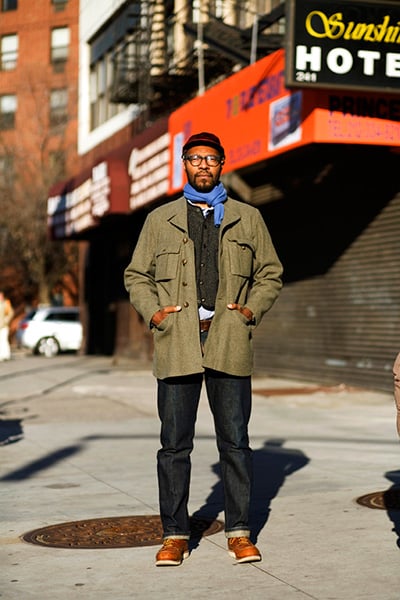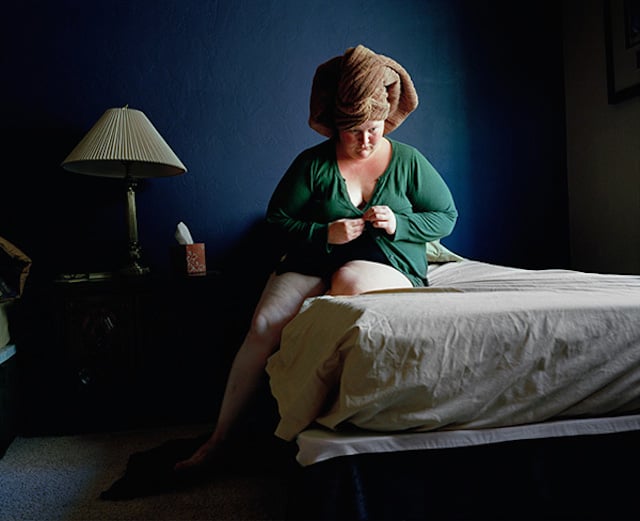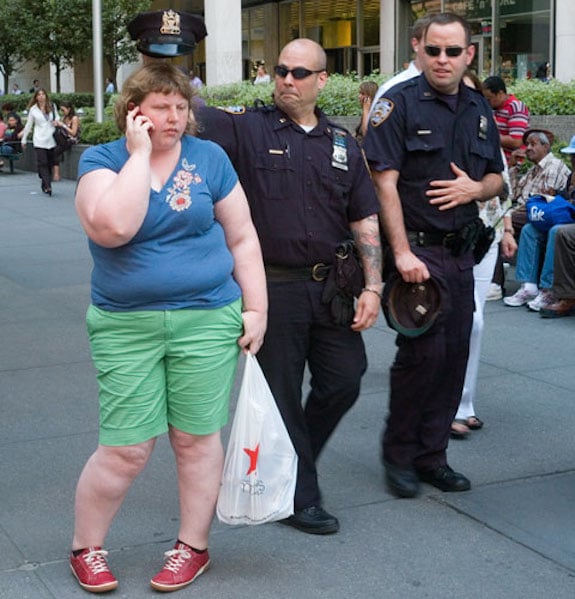Do Good Stories Trump Good Photos? HONY, Selby and More

Photos have been historically considered as a means to record history. But the proliferation of digital devices and social media have turned photography into a visual language.
The Sartorialist, The Selby and Humans of New York
It would be laughable to debate the success of any of these blogs and the photographers behind them. Scott Schumann effectively created the genre of fashion blogger with The Sartorialist in 2005, and utilized shallow depth-of-field and environmental portraiture to create an oft-repeated style.
But the story is the same with each photo — i.e. there is no story. It’s street fashion with no context other than where and when the photo was taken. His early photography isn’t great, but his eye and technique dramatically improved over time leading to photos like this one: Thoroughly well-composed, well-exposed and a lovely portrait of a man in his sartorial best.

Todd Selby started photographing his artist friends in their homes or workspaces in 2008 for The Selby. As word got around, requests for shoots started to flood in, and he parlayed this success into books and ad campaigns for brands like Cole Haan, Nike, Louis Vuitton and more.
Unlike Schumann’s solitary portrait, Selby publishes a set of photos from the portrait to an environmental detail, and finally includes a hand drawn interview sheet that better conveys the personality of the subject. Selby is arguably the better photographer with better stories, but the stories are often about an artistic elite making them less relatable to the everyman. Here is typical environmental portrait of Terence Koh and Garrett Gott.

The unemployed NY transplant, Brandon Stanton, started Humans of New York (HONY) in 2010 on a quest to document “create an exhaustive catalogue of New York City’s inhabitants” with the intent of photographing 10,000 New Yorkers. Four years later, his Facebook followers exceed the population of New York City. Of the three blogs, it is arguably the most viral (not necessarily the most commercially successful), while having the worst photography. That isn’t to say it’s bad photography, but there’s no denying that Selby is far more consistent in producing good photography than Stanton.
Take this recent photo from Stanton’s trip to Iraq as a part of a UN World Tour. The image isn’t particularly sharp, there are tons of distracting background elements, the high key areas of the photo pull your eye away from the subject. But here’s the story:
“My happiest moments are whenever I see my mother happy.”
“What’s the happiest you’ve ever seen her?”
“When I was a child, some German doctors told us that I could have a surgery in Italy, and my legs would work again. She was so happy she started crying. But I never had the money to go.” (Erbil, Iraq)

HONY resonates with a large audience because its stories are more universal despite frequent criticism. Whether or not he slices and dices his interview to come up with more compelling dialogue is irrelevant to his superior story telling abilities.
He knows how to tug on your emotions. One can argue that it is the captions and not the photos that make HONY successful, but that is a technicality in my opinion. Many photos — even the best — require a caption to understand context.
Jen Davis & Haley Morris-Cafiero
Yale MFA-recipient Jen Davis started to explore her self-identity and weight with a self-portrait entitled “Pressure Point” in 2002. The exploration continued with her Light Work’s Artist-in-Residence project entitled “Looking and Looking.”
We live in a society that stigamatizes the obese, and her images are an incredible visual document of the confinement that her weight imparts on her physically and psychologically. This image is a technical masterpiece that is reminiscent of Vermeer.

It’s seems insensitive to compare the merits of two stories of self-identity and weight against one another. Whether it was a function of timing and the spread of social media or some intrinsic the story, there’s no denying that Haley Morris-Cafiero‘s Wait Watchers had larger virality.
Morris-Cafiero’s images don’t have the technical mastery of Davis. This is partially a function of the style (photojournalism vs “art”), and also reflective of the more experienced Davis. That said, I would argue that her photos evoked a stronger reaction because of the overt bullying and harassment depicted behind her back. Morris-Cafiero’s images are almost homage to Davis. Whereas Davis’s images are quiet and solitary, Morris-Cafiero’s scream at us. Injustice? Bullying? Lose some weight?

Purist might lament my point. “A photo should stand on its own!” However, as many people have pointed out, you can be a great photographer but a poor businessperson and fail to succeed. Similarly, in today’s hyper-connected but highly decentralized world of “publishing,” good photography is rarely enough to go viral.
Storytelling is a vital skill for success, and that’s arguably a good thing for photography and photographers because it elevates an aggregation of pixels into a meaningful amalgam of life.
About the author: Allen Murabayashi is the Chairman and Co-founder of PhotoShelter. Allen is a graduate of Yale University, and flosses daily. This article originally appeared here.